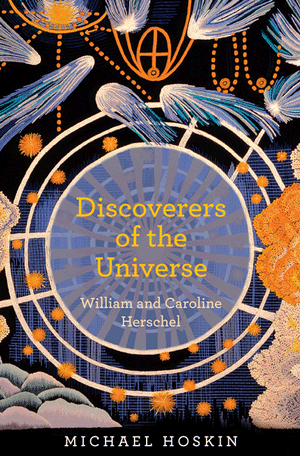It sounds like the makings of a science fiction novel, doesn’t it? But it is the story of William and Caroline Herschel: the 18th century brother/sister stargazing duo. William is probably best known for his discovery of Uranus and as the foremost telescope maker of the 18th century, but between the two of them they discovered new moons on Jupiter, countless nebulae, double stars, and comets. The author, Michael Hoskin, consistently points out that they were also instrumental in revising the view of the cosmos from a mechanical and clockwork universe, to a universe that changes, grows, contracts, and evolves. I guess you could say they were the Darwin of the skies.
William and Caroline were like a pair of binary stars. William was the brilliant inventor, observer and dreamer, but he was bound to Caroline who, though not the genius of the pair, was no less important as his assistant and as an astronomical observer in her own right. The success of one really depended on the help of the other.
While William was the driving force behind their discoveries and inventions, I find Caroline to be a more fascinating figure. From a 21st century feminist perspective it is a little hard to read Caroline’s half of the story and not feel like she was taken advantage of – first by a mother who wanted to keep her as an uneducated drudge, and then by her brother, who rescued her from a life of drudgery but then consistently put his own interests above hers. Hoskin sagely points out that it is both because of William’s selfishness and Caroline’s extreme unselfish commitment to him, that William was able to accomplish so much in his life. One can’t feel too sorry for her though. She was unyieldingly devoted to her brother and regularly made choices that kept her at his side. She was proud of her work, but more proud of his.
This book was succinct. Hoskin spends little time dwelling on the personal details of the Herschel’s lives, which I actually would have liked to see more of. For instance, when William finally marries there is little mention as to why he chose the woman he did or what he really saw in her. Perhaps no record of his emotions exist or quite possibly he saved his emotional and romantic energy for science rather than relationships.
Overall, this was a quick and fascinating read. I highly recommend it for anyone who wants to learn more about the Herschel’s and the wonders of early astronomy.


